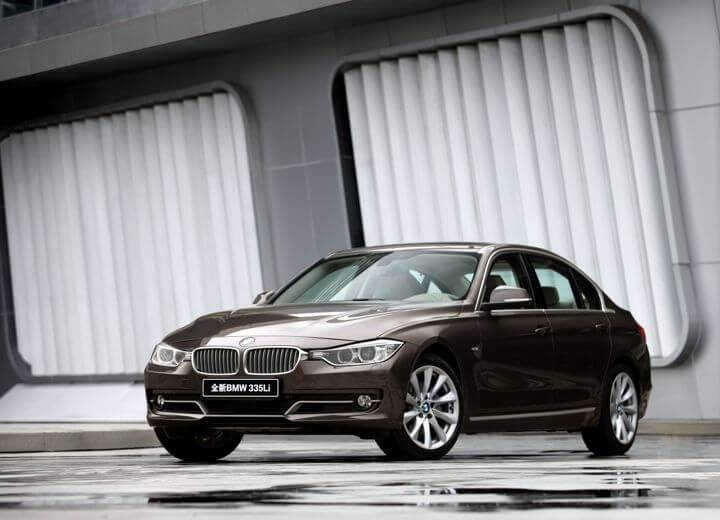German luxury brand car manufacturers Audi, BMW, Porsche, and Mercedes had a record-breaking first half-year in 2012. Growth in China remains the main driving force for most carmakers including Volkswagen.

2012 started off very well for German luxury car manufacturers including Audi, BMW, Porsche, and Mercedes-Benz. All four premium brands, as well as more mainstream Volkswagen, had record-breaking sales figures for the first six months of the year in 2012 with Asia-Pacific and China in particular offering high growth. In a weak European car market, all three managed to increase car sales and steal market share from more mainstream brands. However, China is more important than ever for luxury car producers. China is by far the most important single car market for Audi and Volkswagen while it is the second-largest market for BMW-Mini and Porsche, and the third most important market for Mercedes-Benz cars.
Audi – Best-Selling Premium Car Maker in China in 2012 (Half Year)
Audi had a record first half-year in 2012 with 733,250 (+12.3%) cars sold worldwide. With the exception of the flat European market, where Audi (+2.8%) could gain market share in a weaker market, Audi had spectacular growth elsewhere.
In the Asia-Pacific region, sales of Audi cars increased to 229,050 (+33.8%) cars during the first half of 2012. In the still small Indian market, Audi sales increased by 42.8% to 4,000 cars sold and in South Korea by 50.2% to 7,196 cars. In Japan, sales increased by 18.6% to 11,961 cars sold during the first six months of 2012.
However, continued strong growth in China contributed most to Audi’s spectacular half-year 2012 figures. Audi continues to increase production and sales in China to achieve a record 193,871 new passenger vehicle registrations in China during the first six months of 2012. This represents a growth of 37.8% over the number of Audi cars sold in China during the first half of 2011.
Audi remained the best-selling premium car brand in China. It not only sold comfortably more cars than competitors BMW and Mercedes-Benz but also increased sales by a much larger percentage.
Audi produced 157,441 cars in China itself. Particularly popular was the Q5 SUV with 43,150 cars delivered and the long-wheelbase version of the A4L. The sales figure of 51,131 of the China-only A4L is no doubt what inspired BMW to introduce a long-wheelbase version of the 3 Series for China only from July 2012.
China is by far the most important single market for Audi. During the first six months of 2012, Audi sold 134,173 (+7.3%) cars in Germany with Great Britain (66,188 cars / +4.5%) and the USA (65,158 / +16.5%) the next most important markets.
BMW – Record Sales Worldwide and in China for 2012 (Half Year)
Despite flat sales in Europe and Germany during the first half of 2012, BMW cars reached a new half-year high of 900,539 (+8.1%) cars worldwide. Growth was led by continued growth in China.
In Asia, the BMW Group sold 237,875 cars during the first half of 2012, an increase of 25.7% over the first six months of 2011 (189,254). In Indonesia, BMW sales were boosted by 48% to 1,061 vehicles while even the mature market Japan saw a 27.4% increase with 27,698 new passenger vehicle registrations.
China, however, remains the most important Asian market for BMW. High growth continued in China with 158,956 new BMW and Mini cars registered during the first half of 2012, an increase of 30.7% over the first half of 2011. (During the first half of 2011, BMW sold 121.614 (+61%) cars and 232,586 (+37.6%) cars for the full year 2011.)
China is now the second most important market for the BMW Group behind the USA (158,563 cars / +10.5%). BMW-Mini sold 148,811 (-0.7%) vehicles in Germany during the first half of 2012.
Mercedes-Benz – Record Sales Worldwide and in China for 2012 (First Half)
Mercedes-Benz experienced its best first half-year sales ever in 2012 with 652,924 (+6.9%) Mercedes-Benz cars sold worldwide. Mercedes gained market share in a weak European market but the USA (+15.9% / 128,595 cars) rather than China was the most important growth market for Mercedes-Benz.
In the Asia Pacific region, Mercedes sales increased by 8.6% to 166,740 cars. Sales in Japan increased by 27.5% to 19,099 Mercedes-Benz cars. For Mercedes, China underperformed the wider regional market.
In China, Mercedes-Benz had a record first six months in 2012 by selling 99,391 (+7.8%) cars. In contrast, during the first half of 2011, Mercedes growth in China was +52.3% or 92.174 cars and 193,339 cars (+30,6%) for the full year 2011.
China was the third most important single market for Mercedes-Benz during the first six months of 2012 after the USA and Germany (128,529 +4.5%).
Porsche – Record First Half Year 2012 Worldwide and in China
German sports car and luxury SUV maker Porsche had a record first half-year 2012 too. Worldwide Porsche sold 69,171 cars (+14%) with Europe (+19.7%) surprisingly the strongest regional growth market.
In the Asia-Pacific region, Porsche sales increased to 23,948 (+17%) cars during the first six months of 2012. China became Porsche’s second most important market with 15,274 (+24.5%) cars delivered during the first half-year.
Porsche’s single most important national market remained the USA with 16,450 (+5.8%) cars sold during the first half of 2012, while Germany (9,536 / +20.8%) is the third-largest market.
Volkswagen – Record Deliveries Worldwide and in China in 2012 (First Half)
Volkswagen, which sells a wide spectrum of vehicles worldwide from basic cars to luxury vehicles, had a record start to the year too with 2.79 million (+10.2%) cars during the first six months of the year.
With weak growth in Europe, VW growth was mostly recorded in the Asia-Pacific region where 1,09 million (+15%) cars were sold during the first six months of 2012. China remains Volkswagen’s most important market by far, where the growth of 15,2% led to 982,600 new passenger car registrations, just shy of the million-car mark.
Note: All statistics in this articles are as provided by the manufacturers and may differ slightly from official numbers that use different calculation methods.